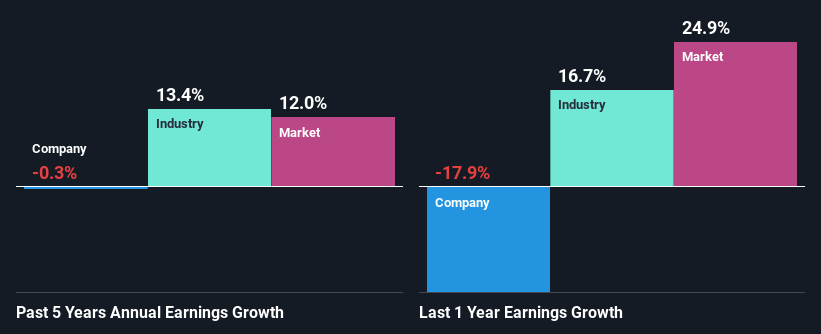Is The Market Rewarding Fiserv, Inc. (NASDAQ:FISV) With A Negative Sentiment As A Result Of Its Mixed Fundamentals?
With its stock down 12% over the past three months, it is easy to disregard Fiserv (NASDAQ:FISV). It is possible that the markets have ignored the company's differing financials and decided to lean-in to the negative sentiment. Long-term fundamentals are usually what drive market outcomes, so it's worth paying close attention. In this article, we decided to focus on Fiserv's ROE.
ROE or return on equity is a useful tool to assess how effectively a company can generate returns on the investment it received from its shareholders. In simpler terms, it measures the profitability of a company in relation to shareholder's equity.
View our latest analysis for Fiserv
How To Calculate Return On Equity?
Return on equity can be calculated by using the formula:
Return on Equity = Net Profit (from continuing operations) ÷ Shareholders' Equity
So, based on the above formula, the ROE for Fiserv is:
2.8% = US$916m ÷ US$33b (Based on the trailing twelve months to March 2021).
The 'return' refers to a company's earnings over the last year. That means that for every $1 worth of shareholders' equity, the company generated $0.03 in profit.
Why Is ROE Important For Earnings Growth?
We have already established that ROE serves as an efficient profit-generating gauge for a company's future earnings. Based on how much of its profits the company chooses to reinvest or "retain", we are then able to evaluate a company's future ability to generate profits. Assuming all else is equal, companies that have both a higher return on equity and higher profit retention are usually the ones that have a higher growth rate when compared to companies that don't have the same features.
Fiserv's Earnings Growth And 2.8% ROE
It is hard to argue that Fiserv's ROE is much good in and of itself. Not just that, even compared to the industry average of 18%, the company's ROE is entirely unremarkable. Therefore, Fiserv's flat earnings over the past five years can possibly be explained by the low ROE amongst other factors.
As a next step, we compared Fiserv's net income growth with the industry and discovered that the industry saw an average growth of 13% in the same period.
The basis for attaching value to a company is, to a great extent, tied to its earnings growth. What investors need to determine next is if the expected earnings growth, or the lack of it, is already built into the share price. Doing so will help them establish if the stock's future looks promising or ominous. What is FISV worth today? The intrinsic value infographic in our free research report helps visualize whether FISV is currently mispriced by the market.
Is Fiserv Efficiently Re-investing Its Profits?
Summary
On the whole, we feel that the performance shown by Fiserv can be open to many interpretations. While the company does have a high rate of profit retention, its low rate of return is probably hampering its earnings growth. Having said that, looking at current analyst estimates, we found that the company's earnings growth rate is expected to see a huge improvement. Are these analysts expectations based on the broad expectations for the industry, or on the company's fundamentals? Click here to be taken to our analyst's forecasts page for the company.
This article by Simply Wall St is general in nature. It does not constitute a recommendation to buy or sell any stock, and does not take account of your objectives, or your financial situation. We aim to bring you long-term focused analysis driven by fundamental data. Note that our analysis may not factor in the latest price-sensitive company announcements or qualitative material. Simply Wall St has no position in any stocks mentioned.
Have feedback on this article? Concerned about the content? Get in touch with us directly. Alternatively, email editorial-team (at) simplywallst.com.



